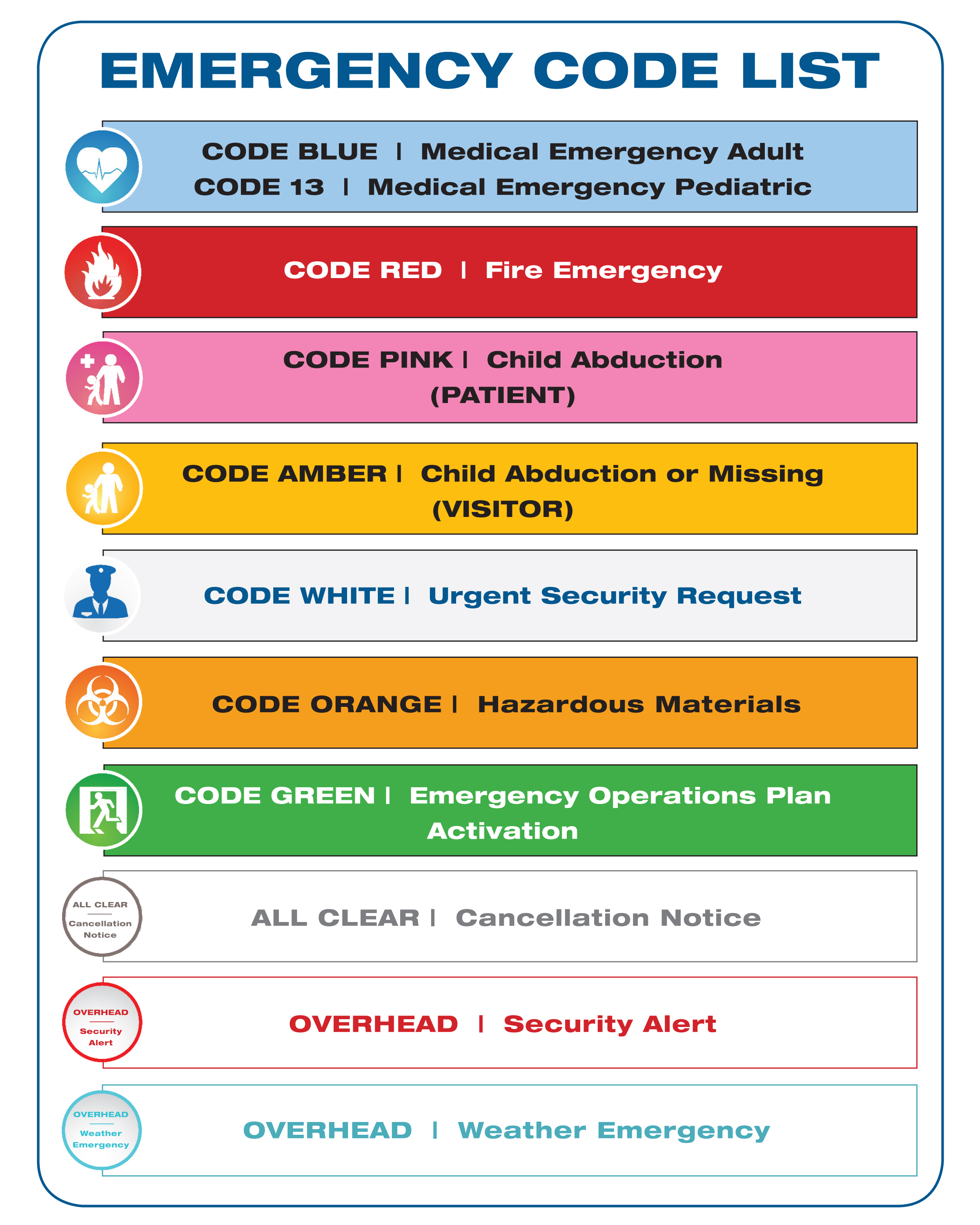Revised, streamlined announcements address risks, decrease confusion

Published in News Stories on October 02, 2015
Most people walking the halls of the University of Mississippi Medical Center's hospitals know what it means when they hear Code Blue on an overhead speaker and see employees in scrubs or white coats running to a medical emergency.

Aligning itself with the newest and best health-care practices nationally, the Medical Center is introducing and revising some of its existing codes, said Jason Smith, manager of emergency services. The newest codes will alert the campus community to the most extreme incidents that can jeopardize lives and safety.
Until recently, Smith said, "there hasn't been a consistent national standard. This will decrease confusion. When someone who worked at a hospital in Virginia comes here to work, they don't have to relearn a set of codes."
"We want to make sure the entire campus community knows what to do," said Jonathan Wilson, chief administrative officer. "Immediate action can save lives, and these codes address risks to safety and security. That's the biggest priority for our campus."
Not just frontline providers, but all UMMC employees are expected to take note, Smith said.

"Anyone who walks the halls of this hospital should know what the codes mean at any time, especially for awareness in a particular situation," he said.
Codes that will remain unchanged include Code Blue, an adult medical emergency in which the announcement includes the location of the emergency; Code 13, a pediatric medical emergency that includes its location; and Code White, an incident where a campus security presence is needed to help control a disruptive patient or guest.
Those revised are Code Red, a fire and its location, formerly known as Dr. Red; and Code Pink, an infant or child patient abduction, updated to include the location, age and a description to help identify the child.
Some are new and made necessary because of changing technology, environmental factors and the need to alert those at the Medical Center to threats from the outside, be it a natural disaster or an armed intruder:
• Code Amber, a missing or lost child who is a visitor, not a patient. It will include the location, age and description of the child.
• Code Orange, a hazardous-materials incident that can include large spills and exposures. It can be used for facility or medical alerts requiring cleanup or decontamination and is initiated only by UMMC's environmental health and safety employees.
• Code Green, an incident such as a natural disaster or mass casualty that calls for activation of the hospital's emergency operations plan. It's initiated only by emergency management or the Medical Center's senior leadership.

According to Wilson, it's important for UMMC to align itself with national code standards.
"Everyone having their own color codes can add to confusion," he said. "Having clarity and a clear definition will help us to take immediate action."
UMMC's campus police force of 60 officers has been trained in all scenarios that could occur in a security alert or a weather emergency, said Chief Michael Stamps. Although a full-scale campus drill hasn't been performed yet, Stamps said when it does, it will involve very detailed planning and coordination.
Stamps agrees that everyone on campus, regardless of their role, should know all of the codes.
"It's very important to us," he said. "If you don't know what it means, you don't know how to react to it. If you can't do that, it will make it harder for us to do our jobs."
Smith said he doesn't remember an incident at UMMC in recent years that would have resulted in a security alert.

Samantha Tucker, communications specialist and dispatcher in the MED-COM emergency response center, keeps an eye on severe storms moving across Mississippi.
Campus Police officers perform monthly drills on Code Pink, and response to that code and Code Red aren't uncommon, although most are false alarms. Stamps said his officers may routinely assist when a Code White involving patients is called.
Stamps said the new Code Orange and Code Green are very critical because they can affect so many employees.
"Our officers are on the go with countless hours of training on disasters, be they manmade or natural," he said. "We send our people all the way to New Mexico for training, just in case a Code Orange happens. We have radioactive material on our campus, so we stay on top of detection, prevention and response."
Wilson said he considers an armed intruder, especially one who is using a weapon, and a tornado on the ground approaching UMMC as the two biggest risks to campus. Adding the new announcements "gives us the easiest way to hardwire in a quick response when everyone may be under stress," he said.
Although there are a number of codes to learn, "we've tried to make them easy," Wilson said. "We want to keep it simple so that we won't have hesitation and will all know what to do."


